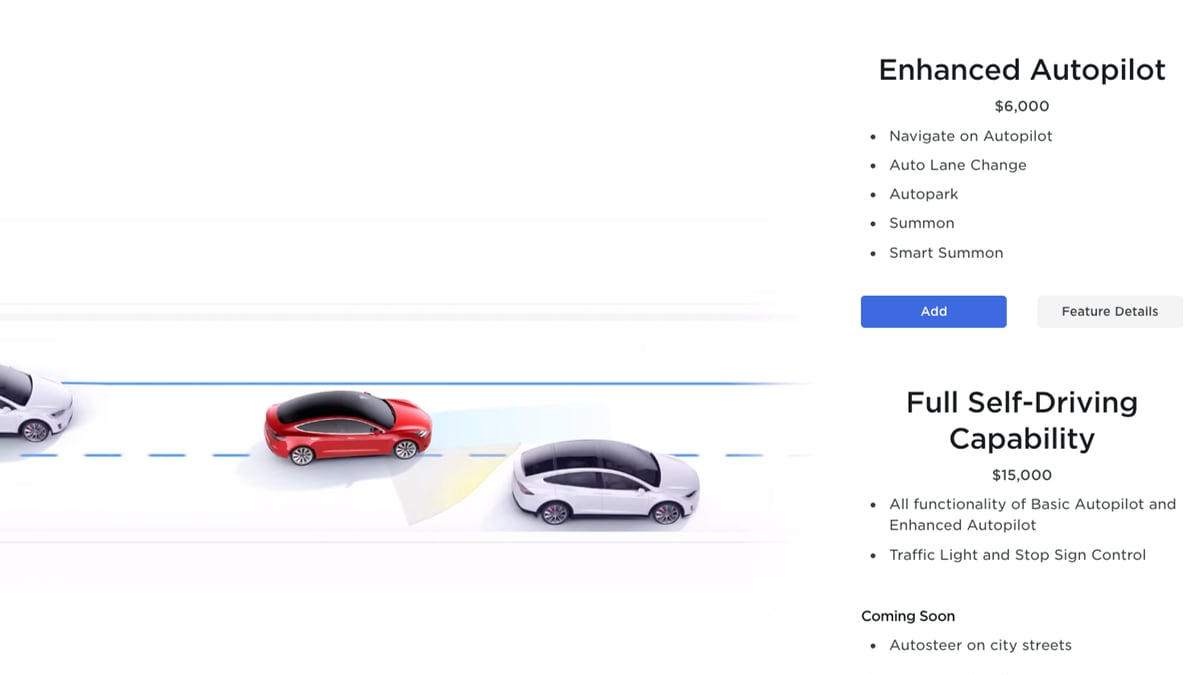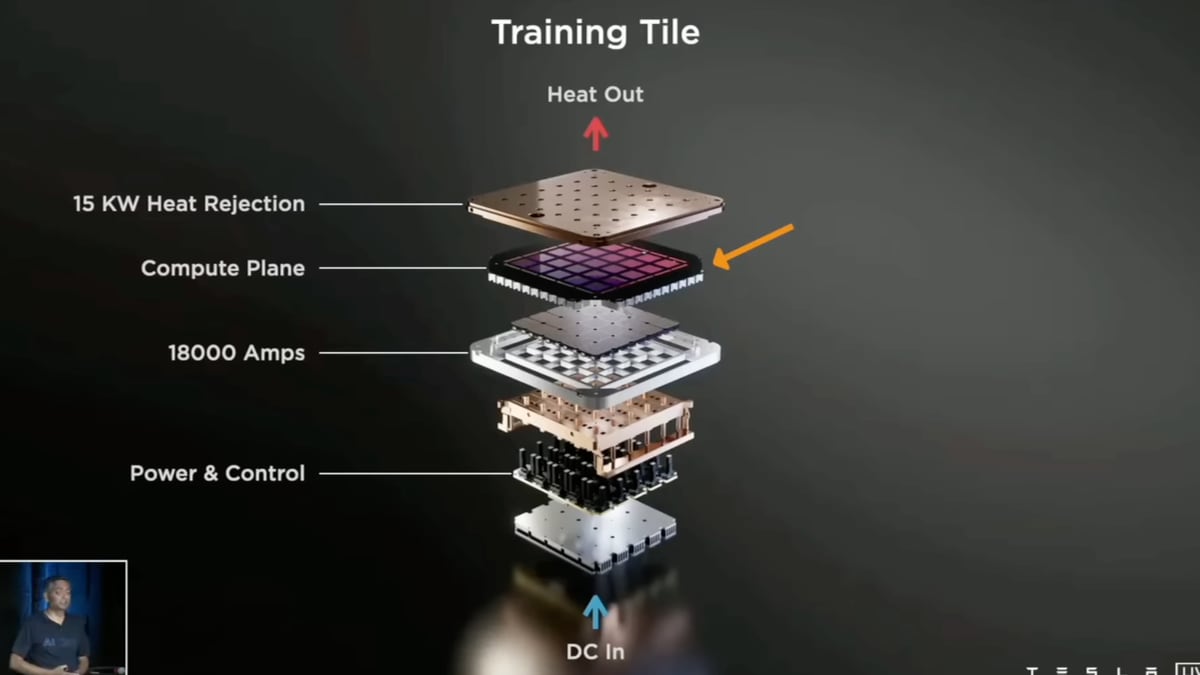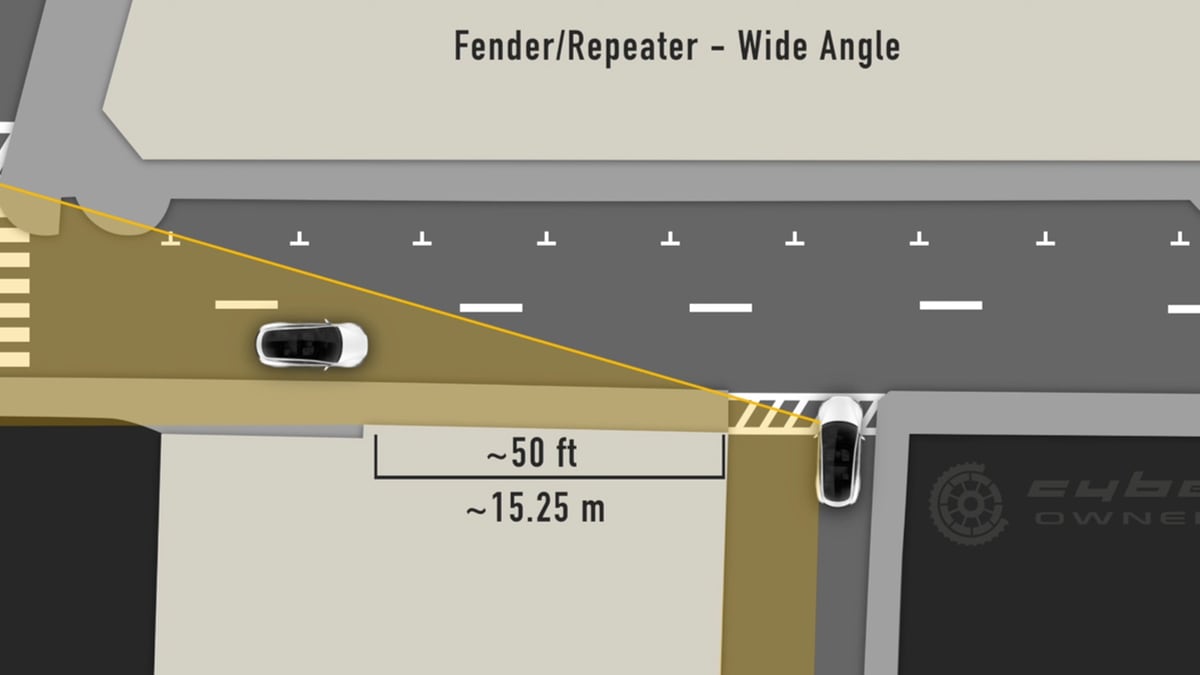By Kevin Armstrong

The cost of Tesla's Full Self Driving has increased 300% since it was revamped and made available to buy in 2019. Those lucky enough to buy FSD in April 2019 got it for the bargain basement price of $5,000 - it now costs $15,000 in the United States.
Elon Musk warned consumers through Twitter that FSD would be more expensive. On August 21 2022, he tweeted: After wide release of FSD Beta 10.69.2, price of FSD will rise to $15k in North America on September 5. Current price will be honored for orders made before September 5 but delivered later.
Tesla reorganized its Autopilot and FSD packages three years ago; basic Autopilot was introduced and became standard on every vehicle, while FSD was priced at $5,000. Enhanced Autopilot was removed as an option at the time, but was later reintroduced as a $6,000 option in June of 2022.
Before 2019 FSD was an add-on that required also buying Enhanced Autopilot. Enhanced Autopilot cost $5,000 and FSD was a $3,000 option on top of that if ordered with the vehicle. If you ordered FSD after taking delivery then it cost $4,000, which later went up to $5,000.
It can only be assumed that there were a lot of buyers for FSD when Tesla rearranged their offerings in 2019, as the price for FSD went up the following month and has been on the rise since.
In fact, Tesla raised the price again three months after the first release, and eighteen months later, it had doubled to $10,000. 2022 started with another jump to $12,000 in January, and now nine months later, the price has gone up again.
Historical FSD Prices
Historical FSD prices since Tesla revamped its FSD offering in 2019.
| Date | FSD Cost |
|---|---|
| April 2019 | $5,000 |
| May 2019 | $6,000 |
| August 2019 | $7,000 |
| July 2020 | $8,000 |
| October 2020 | $10,000 |
| January 2022 | $12,000 |
| September 2022 | $15,000 |
Tesla's CEO has made no qualms about the value of the program. At a shareholders' meeting in August, he said Tesla's engineers are producing breakthroughs in artificial intelligence. "We're solving a very important part of AI and one that can ultimately save millions of lives. And prevent 10 of millions of serious injuries by driving just an order of magnitude safer than people," said Musk. Since its inception and to this day, Musk believes that Teslas will be fully autonomous. He sees a future where your car would drive you to work, then operate as a ride share until you need to go home.
While Musk said the price would increase to $15,000 in North America, it skyrocketed to $19,500 in Canada, more than a 50% boost from what it cost in August. Although there is a monthly subscription offered in the U.S., there currently isn't one offered north of the border.
By Lennon Cihak

Tesla participated in Hot Chips 34 and shared a ton of mind-boggling information about their Dojo supercomputer and chip architecture.
The details shared about Dojo in Hot Chips 34 by Tesla’s Emil Talpes, who worked at AMD for about 17 years for Opteron processors, are only about the hardware and capabilities of the tiles and Dojo as a whole. The performance will be discussed at Tesla’s AI Day II on September 30th.
The goal with Dojo is, according to Musk, “to be really good at video training. We have probably the fourth or approaching the third most powerful computing center in the world for AI training. Our first goal with Dojo is to make it competitive and be more effective and neural net training than a whole bunch of GPUs.”
Since Tesla needs a lot of computing power to process the video data from the vehicles in its fleet, it has built a proprietary system-on-wafer solution. According to ServeTheHome, “Each D1 die is integrated onto a tile with 25 dies at 15kW. Beyond the 25 D1 dies, there are also 40 smaller I/O dies.”
All of the power and cooling is integrated directly on the Training Tile, which is capable of 10 TB/s on-tile bisection bandwidth and 36 TB/s off-tile aggregate bandwidth. This architecture allows for the tiles to be scaled with 9TB/s links between them. They can also be plugged in and do not require their own server.
“The defining goal of our application is scalability,” Talpes said at the end of the presentation. “We have de-emphasized several mechanisms that you find in typical CPUs, like coherency, virtual memory, and global lookup directories just because these mechanisms do not scale very well when we scale up to a very large system. Instead, we have relied on a very fast and very distributed SRAM storage throughout the mesh. And this is backed by an order of magnitude higher speed of interconnect than what you find in a typical distributed system.”
The inside look into what Tesla’s building behind the scenes continues to prove how and why Tesla is at the forefront in artificial intelligence and neural net training. It gives the Tesla community an added sense of comfort knowing that Tesla will always have scalability and innovative technology at the forefront of everything the automotive company does.
Watch Anastasi In Tech’s Recap of Tesla’s Hot Chip 34 Presentation
By Kevin Armstrong

Tesla continues to roll out Full Self Driving and has also increased the cost of FSD. The system is logging millions of miles and constantly improving as Elon Musk continues his quest to make driving safer, preventing injuries and saving lives. However, there are still many skeptics of the program that has the potential to revolutionize transportation as we know it.
Some of Tesla's most prominent supporters are its harshest critics, but Musk said at the Tesla shareholders meeting in August that he welcomes honest evaluations. The YouTube channel for CyberOwners has a truthful, well-explained assessment. Mike Hoffman of CyberOwners demonstrates and clearly explains one of the most significant issues with Tesla's ability to see its surroundings and navigate safely. The blind corner.
Video Explanation
We've all encountered these situations while driving. Something obstructs our view, and we must lean over the steering wheel while slowly creeping forward to see if it's safe to proceed. As Hoffman shows, the current camera setup has a large area it can not detect. But there are solutions, some that would cost a lot of money and some that could be a simple camera swap.
Hoffman believes Tesla may already be testing a new repeater camera. The repeater camera, more commonly known as the blind spot camera, is on the front fenders. These cameras capture video to the side and back of the vehicle. But Hoffman noticed something different in a video posted by Ashok Elluswamy (below), Tesla's Director of the Autopilot Program.
It appears the program is gathering data from the repeater camera that is further forward than the current camera view. There is also speculation that the video Elluswamy shows is from the b-pillar, the one that is between the front and rear doors. Hoffman says the camera sees much further ahead and is convinced a new repeater camera is being used.
Alternative solutions to this blind corner dilemma include adding cameras to the front bumper and fog lights or moving the b-pillar camera to the side mirror housing. However, this would require new cameras and wiring, which would mean the computer would have to analyze more video streams. This action would be a considerable cost for Tesla, and Hoffman believes a camera swap is much more probable.
Hoffman might be right. It would not be the first time Tesla has changed the repeater camera. When a software update in 2021 included the blind spot feature, some users discovered the repeater camera had glare and was not much help. Tesla changed those cameras out for free.
Most of Tesla's cameras are made to be quickly swappable. Repeater cameras and b-pillar cameras can be swapped out in less than five minutes. That said, this change would require Tesla to swap out potentially millions of cameras. Not a cheap solution, but perhaps the best one to improve another aspect of a system on the cutting edge of technology.
from "price" - Google News https://ift.tt/KBZ80fv
via IFTTT
No comments:
Post a Comment